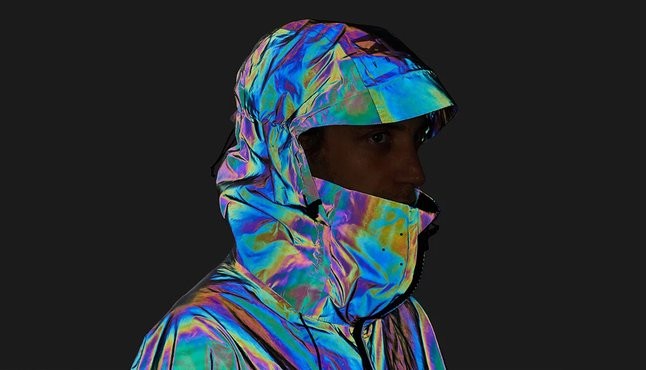
Spectrum

No, this image has not been photoshopped - the black squid adventure jacket by Vollebak is really that shiny.
Mimicking the adaptive camouflage of squids, the Vollebak team has created this colour-shifting coat by embedding over two billion microscopic glass spheres into the jacket's surface with lasers (that's over 40,000 spheres in every square centimetre). This is to replicate the microscopic plate-like structures of the surface of the skin of a squid, which it uses to manipulate its appearance and change colour. In normal daylight, this jacket appears as a slightly iridescent dark grey. But under bright light, the microscopic glass spheres reflect every colour in the visible spectrum, creating a rainbow effect. It is also fully water- and wind-proof.

Without an external shell or armour, the squid's soft body is highly vulnerable to predators. Camouflage is its primary survival mechanism, so being able to manipulate the colour of its skin to mimic the hues and textures of its environment is fundamental. Squids can even manipulate their microscopic skin-plates to mimic the way that light shimmers through the water in open ocean. Usually, the squid aims for invisibility in its camouflage - Vollebak, on the other hand, were inspired by this technology to aim for hypervisibility.

The spheres in the black squid jacket's three layers of fabric are invisible to the naked eye, but scatter light when it hits the jacket. This creates the illusion that the jacket itself is emitting light. As the wearer moves, hypnotic patterns dance across the coat's surface, looking different at every angle.
Blog post by Jessica Edney. Read next: Jessica Hemmings' article Double Dutch in the Substance issue. Subscribe to Selvedge here.
